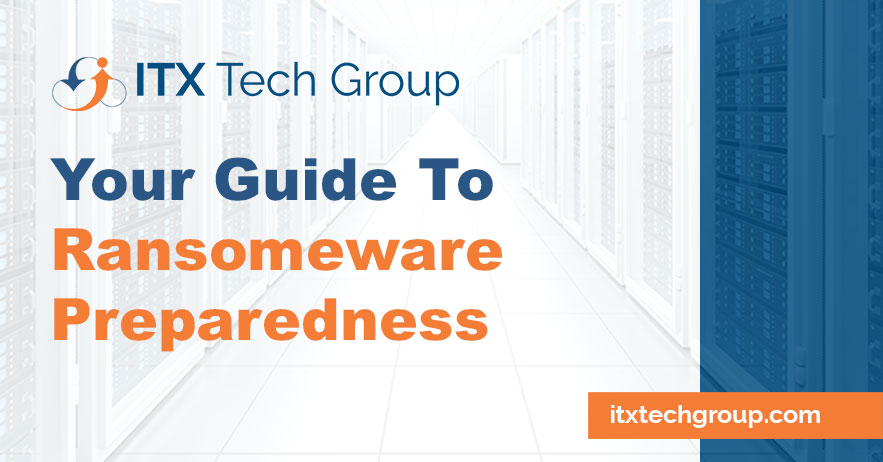Ransomware attacks continue to evolve in sophistication, making preparedness a strategic imperative for businesses.
In this article, we will explore the key elements of ransomware preparedness and the proactive measures businesses can take to fortify their defenses against this ever-present cybersecurity threat.
Understanding Ransomware
Ransomware is a type of malicious software designed to encrypt files or systems, rendering them inaccessible until a ransom is paid, often in cryptocurrency.
As the frequency and sophistication of ransomware attacks increase, businesses must adopt a proactive stance to mitigate the risks and consequences associated with such incidents.
Comprehensive Risk Assessment: Identifying Vulnerabilities
Ransomware preparedness begins with a comprehensive risk assessment. Evaluate your organization’s digital landscape to identify potential vulnerabilities, weak points in security infrastructure, and areas where employee training may be strengthened.
Understanding the specific risks your business faces lays the foundation for an effective preparedness strategy.
Robust Cybersecurity Framework: Building a Secure Infrastructure
Invest in a robust cybersecurity framework that includes advanced endpoint protection, firewalls, and intrusion detection systems. Regularly update and patch all software to address vulnerabilities promptly.
This multi-layered approach forms the bedrock of a resilient defense against ransomware attacks.
Employee Training and Awareness: Creating a Human Firewall
Educate and train employees on cybersecurity best practices, emphasizing the importance of vigilance in recognizing phishing attempts and social engineering tactics.
Employees are often the first line of defense against ransomware, making continuous training an essential component of preparedness efforts.
Secure Backup and Recovery Strategy: Data Resilience
Develop and implement a secure backup and recovery strategy. Regularly back up critical data, and ensure backups are stored in an isolated environment.
Establishing a reliable backup and recovery mechanism is pivotal for minimizing downtime and reducing the impact of a ransomware attack.
Incident Response Plan: A Well-Defined Blueprint
Craft a comprehensive incident response plan that outlines the steps to be taken in the event of a ransomware attack. Define roles and responsibilities, communication protocols, and a clear process for isolating affected systems.
Regularly test and update the plan to ensure its effectiveness.
Regular Security Audits: Continuous Improvement
Conduct regular security audits to assess and address vulnerabilities. These audits help organizations stay ahead of emerging threats, identify weaknesses, and implement corrective measures to enhance overall cybersecurity preparedness.
Collaborate with Cybersecurity Experts: External Support
Engage with cybersecurity experts, such as managed security service providers (MSSPs), to augment your organization’s defense mechanisms.
MSSPs can provide real-time threat intelligence, conduct security audits, and offer proactive monitoring to identify and neutralize potential threats before they escalate.
Multi-Factor Authentication (MFA): Strengthening Access Controls
Implement multi-factor authentication (MFA) to add an additional layer of security to user accounts. MFA significantly reduces the risk of unauthorized access, even if login credentials are compromised, contributing to enhanced preparedness against ransomware.
Regular Employee Awareness Campaigns: Sustaining Vigilance
Sustain a culture of cybersecurity awareness through regular campaigns and communications. Remind employees of the evolving nature of cyber threats, and encourage them to report any suspicious activities promptly.
An informed and vigilant workforce acts as a critical component of ransomware preparedness.
Legal and Law Enforcement Collaboration: Reporting Incidents
Collaborate with law enforcement agencies and legal experts in the event of a ransomware incident. Reporting incidents contributes to ongoing investigations and may lead to the identification and apprehension of cybercriminals.
Conclusion: Building Resilience in the Face of Ransomware Threats
Ransomware preparedness is not a one-time effort but an ongoing commitment to building resilience in the face of evolving cyber threats.
By conducting risk assessments, investing in robust cybersecurity measures, and fostering a culture of awareness and vigilance, businesses can significantly enhance their ability to withstand and recover from ransomware attacks.
As the threat landscape continues to evolve, proactive preparedness remains a key strategy for safeguarding the integrity, continuity, and reputation of businesses in the digital age.
ITX Tech Group has been serving small, medium, and large scale businesses with their IT support and cybersecurity needs all over the United States since 2011, so we’re confident we can provide you with affordable, professional IT solutions for years to come!
Connect with us for a free consultation to discuss your business technology needs.

